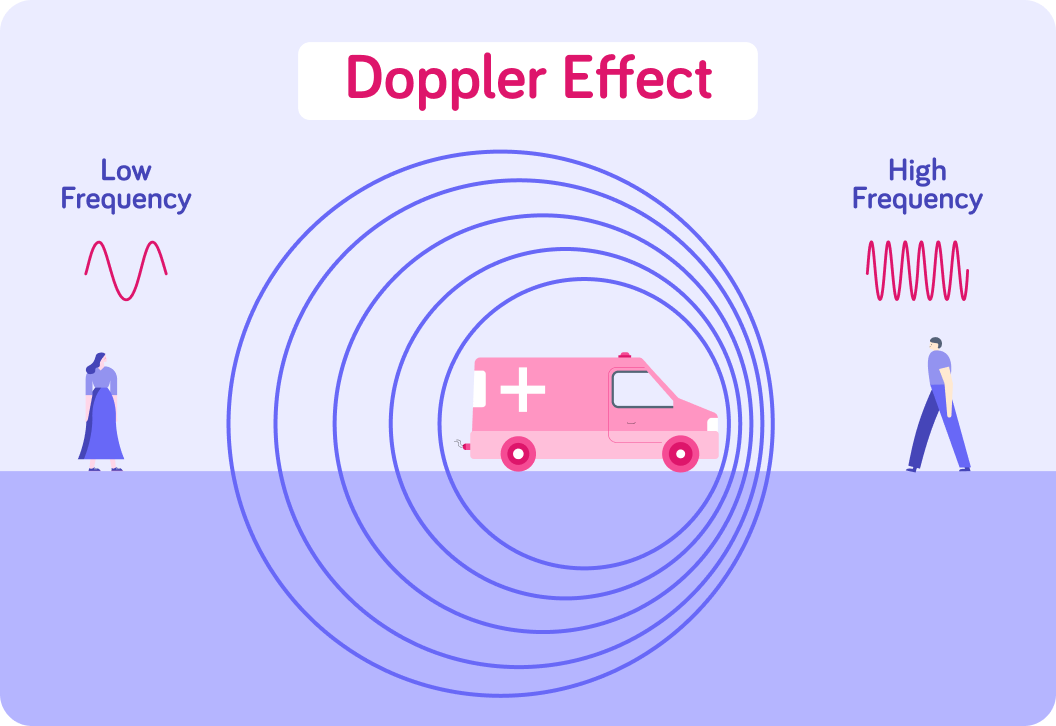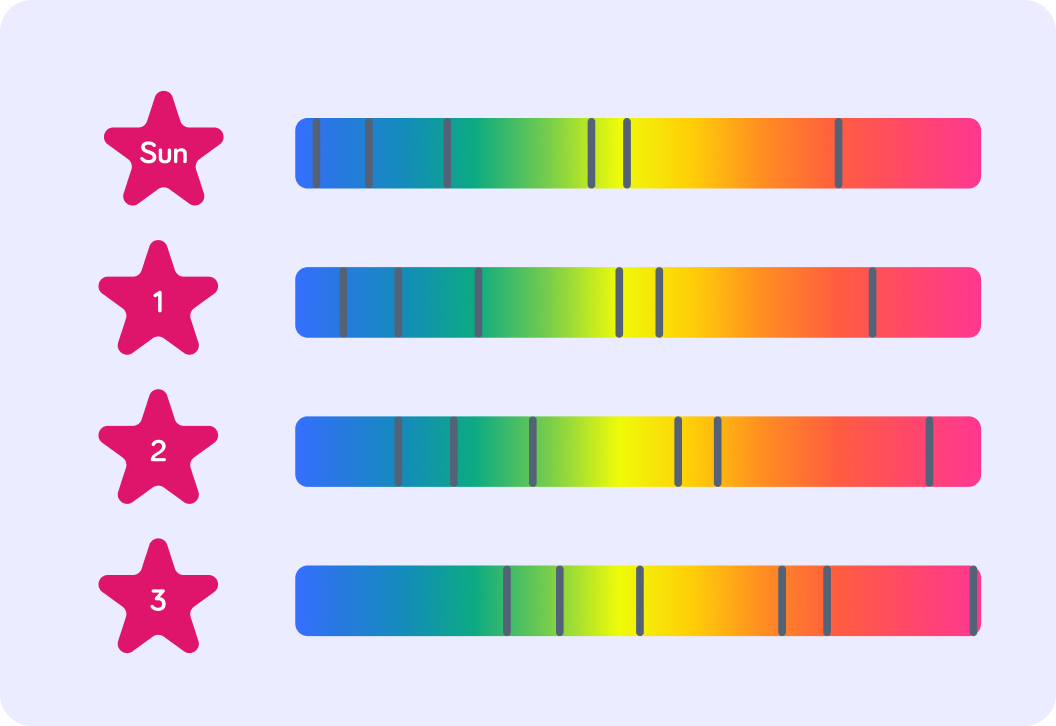YOU ARE LEARNING:
Red-Shift

Red-Shift
We know that far away galaxies are moving away from us because the light they emit is red-shifted.
When an ambulance is moving towards you, the sound you hear from the siren is different to when it is moving away from you. Which options best describe the difference you would hear?

You can select multiple answers
Which property of a sound wave determines the pitch of the sound?

Sound waves with a higher frequency have a higher pitch, and those with a lower frequency have a lower pitch. What can you conclude about frequency of sound waves from an ambulance siren as it moves away from you?

The Doppler effect
When the source of the sound wave moves towards an observer, the observed wavelength decreases and the frequency increases. The opposite is true when the source moves away from an observer. This is called the Doppler effect.

The Doppler effect is true for light waves too.
We can use that to help us to understand more about distant stars and galaxies by studying the light from them!

This is the electromagnetic spectrum.
In the middle, we have the visible light spectrum, which is what stars mainly emit.

Stars produce mainly yellow light. Does red light have a shorter or longer wavelength than yellow light?


Red light has a longer wavelength than yellow light, so how does the frequency of the light compare?
A) Red light has a higher frequency than yellow light. B) Red light has a lower frequency than yellow light.
Answer A or B.


Remember the ambulance siren? The same effect is observed in light waves.
The frequency of the sound wave decreased when the source of the wave moved away from the observer, and increased when the source moved towards the observer. When light waves have a lower frequency, they are more red than when the frequency is higher.

If the wavelength of light from a star in a distant galaxy has shifted from yellow light so it is closer to the wavelength of red light, the star is...
A) moving away from Earth B) moving towards Earth C) not moving
Answer A, B or C.


If the wavelength of light from a star in a distant galaxy has shifted from yellow light so it is closer to the wavelength of blue light, the star is...
A) moving away from Earth B) moving towards Earth C) not moving
Answer A, B or C.


If a star or galaxy is moving away from us, the wavelength of the light is stretched so that the light appears red. This is called a red-shift, because the spectrum of light is shifted towards the red part of the spectrum.
If a star or galaxy that is moving away from us causes a red-shift, then what might we call it if it were moving towards us?

In 1929, the astronomer Edward Hubble discovered that the light from distant galaxies was red-shifted, and the further a galaxy was from Earth, the bigger its red-shift was. Which conclusions do you think he drew from this discovery?

You can select multiple answers
The image shows an atomic spectra of the light from the Sun compared to that of 3 distant stars.
Atomic spectra are used to analyse the light from distant stars and galaxies. The dark lines are caused by absorption of light by atoms, such as hydrogen.

Because the stars are made from the same chemicals, the black lines should be in the same place. But they are not! In the atomic spectra of the stars (other than the Sun), the dark lines have...
A) moved towards the blue end of the spectrum. B) moved towards the red end of the spectrum.
Answer A or B.


This means there has been a red-shift. Has the wavelength of the stars' light increased or decreased?


This red-shift must mean that the stars are...
A) moving towards us. B) staying still. C) moving away from us.
Answer A, B or C.


The faster a star or galaxy is moving, the bigger the red-shift.
This must mean that the light from the most distant galaxies show the biggest red-shift.

Which star do you think is moving away from us faster? Answer 1, 2, or 3.


The faster a star or galaxy is moving, the ________ its shift will be.

